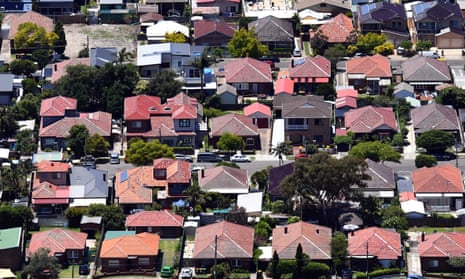Australia’s big banks are leaning on new borrowers to keep profits rolling as they prepare for more of their existing customers to succumb to rising borrowing costs.
Mortgage rate analysis shows lenders are lifting rates for new borrowers at a faster pace than official cash rate increases. Fixed rates are also leaping higher.
Banks were preparing their mortgage books for increasing bad debts, as rising rates affected households, said Paul Kofman, business and economics faculty dean at the University of Melbourne.
“When inflation crept up and interest rates started to increase, profit margins of banks increased considerably. But what we are seeing now is a provision for mortgage defaults,” Kofman said.
“Banks are getting spooked about increasing default rates when interest rate rises continue. We’ve come to the peak of profit margins and beyond that point they are getting eroded by bad debts.”
The sector was able to endure the initial stages of the pandemic, before banks started boosting profit margins through the inflationary period by increasing lending rates faster than their deposit rates, their primary source of funding.
As the pace of rate hikes slowed, they turned their gaze to new customers to maintain profit margins.
Sign up for Guardian Australia’s free morning and afternoon email newsletters for your daily news roundup
The big banks have now lifted rates on offer to new customers by 0.32 percentage points more than official cash rate increases since the start of the year, according to mortgage broker Finspo.
This has created an unusual scenario with advertised specials now often priced higher than rates applied to existing customers, the Finspo chief executive Angus Gilfillan said.
“There’s been so much change it’s getting pretty confusing for mortgage holders; we are finding a lot of customers are unsure what a good rate is,” said Gilfillan.
Many lenders have also reduced or stopped offering cash backs, which are commonly used to entice new customers.
The changes contrast with the usual strategy of enticing new borrowers with more attractive rates than those applied to existing customers.
If banks were to start lifting rates on exisiting customers at a faster pace than official rate rises, they would likely face intense public and political pressure, and risk pushing more already heavily indebted households into financial distress.
An Australian Banking Association spokesperson said lenders might be able to assist customers by restructuring loans, offering interest-only payments, extending the term of a loan or offering payment deferrals.
Forced sales are most prevalent among first homeowners who bought homes when rates were low during the early stages of the pandemic and who have now found repayments unaffordable, and among mortgagees nearing or in retirement, according to financial counsellors.
Fixed rates have also risen significantly, but they are less correlated to official cash rate movements than variable rates.
The Reserve Bank’s cash rate has jumped from 0.1% to 4.1% since this rate-hiking cycle started in May last year, pushing most mortgage rates well above 6%.
Someone with a $750,000 home loan would need to find more than $1,700 extra a month to meet variable rate changes.
Australia’s biggest lender, Commonwealth Bank, is scheduled to release its full-year results on Wednesday, which should provide some insight into the sector’s profitability.
The bank’s arrears and default figures will also show how rising borrowing costs are weighing on customers.
At its half-year results reported earlier this year, CBA’s chief gauge of profitability, net interest margins, spiked to 2.1%, an historically healthy level.
A CBA spokesperson said rate changes on products for new customers did not impact existing borrowers.
“As part of our ongoing review of interest rates, market conditions and funding costs, we periodically make changes to new home loan borrowings on certain home loan products,” the spokesperson said.
